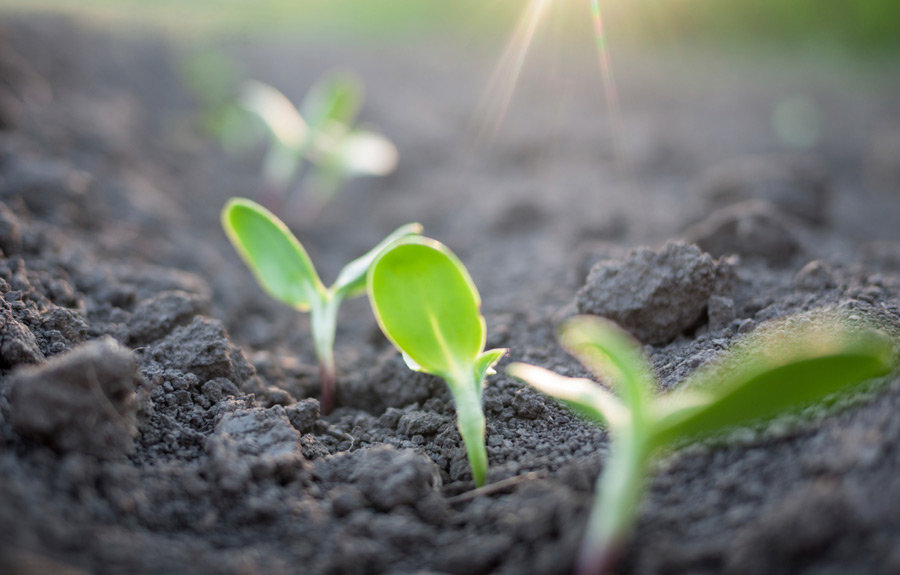
By January gardens are put to rest. Beds are cleared, mulch is spread. In the comfort of winter life spent indoors, people begin to dream and plan for the coming spring. It is a time to cozy up with what, for an avid gardener, may be better than a good novel. “People here do love their seed catalogs,” said KP resident and Pierce County Master Gardener Dale Skrivanich.
This is when gardeners like Catherine Kosel begin to pore over their catalogs. Kosel grew up on the KP and one of her earliest memories is standing in the family garden with her father when she was a toddler. She helped with the “fun things,” like planting potatoes when she was about 5, and was put to work in earnest by the time she was 10, weeding the beds. The garden was primarily vegetables in the beginning but expanded to include flowers — adding to the number of catalogs that can fill her days.
“You can look at things online,” she said, “but it is much harder to really see all the seeds and compare the growing seasons.” She starts with the basic things she knows she will need to grow — things like corn, beans, tomatoes — and then she adds the things she just can’t live without. It may be particular squashes for their unique shapes and colors, or a flower that intrigues her.
Seeds are miraculous things. For plants they are the key to survival. A plant may be able to sprout from a shoot or a stem — anyone trying to eradicate blackberries or buttercups knows that. But evolution and spread beyond the mother plant require seeds. They contain an embryo and the food it needs to get a start. They have any number of mechanisms to assure they get sent far and wide, be it by animals, wind or water. They may be contained in a protective shell, supplied with wings, coated by burrs, or surrounded by something tasty.
Humans have foraged and eaten seeds and the fruit that contain them for more than 100,000 years. Crops were first cultivated about 12,000 years ago in the Fertile Crescent in the Middle East. Humans have toiled to bend nature ever since and then on occasion, to heal the resulting damage.
From the beginning, people used cross-breeding to introduce desirable traits in crops and animals, but it wasn’t until 1866 that Gregor Mendel, an Austrian monk, identified the basic mechanism of inheritance through his work with peas.
Author John Navazio, in “A Short History of Agricultural Seed,” wrote that before World War II farms were largely self-sufficient, growing their own livestock and seed. The three decades following the war brought agricultural industrialization. Fertilizers, pesticides, mechanization and more sophisticated plant breeding (incorporation of disease resistance, improved production and nutritional quality) brought a faith in science to solve world hunger. The agricultural industrial complex began to buy up seed companies and selected seeds that thrived in environments with ample irrigation and fertilizer, not “field toughened” as in prior times.
At the same time, organic farming was coming into its own. In the 1970s and ’80s farmers worked a greater variety of lands and built soil health through local nutrients rather than depending on fertilizers. Early on they paid less attention to seed sources, assuming the seeds supplied by seed companies were what they needed. When they realized that those newer varieties did not necessarily meet their needs, they began to work on decentralizing seed sources and encouraging seed diversity. At about the same time, seed banks were established to preserve plant diversity. Worldwide there are more than 1,000, including one at Washington State University and one at the University of Washington.
For those looking for some winter reading, the Key Pen Gardeners group on Facebook had several recommendations. The top two contenders were Territorial Seed Company which, with its Pacific Northwest roots, is especially suited to local gardens, and Baker Creek Heirloom Seeds in Missouri. Both have websites full of useful information. Skrivanich advises paying close attention to the growing season when making selections. It’s very short.
Skrivanich recommends Irish Eyes Garden Seeds in Ellensburg; Dixondale Farms in Texas for onions and leeks; Kitazawa Seed Company in California for Asian vegetables (they have recipes if some of the produce is unfamiliar) and MIGardener in Missouri for premium heirloom seeds. Other Northwest favorites are Nichols Garden Nursery in Oregon and Uprising Seeds in Bellingham. For flower lovers Kosel turns to Skagit Valley’s Floret Flowers.
UNDERWRITTEN BY THE FUND FOR NONPROFIT NEWS (NEWSMATCH) AT THE MIAMI FOUNDATION, THE ANGEL GUILD, ADVERTISERS, DONORS AND PEOPLE WHO SUPPORT INDEPENDENT, NONPROFIT LOCAL NEWS